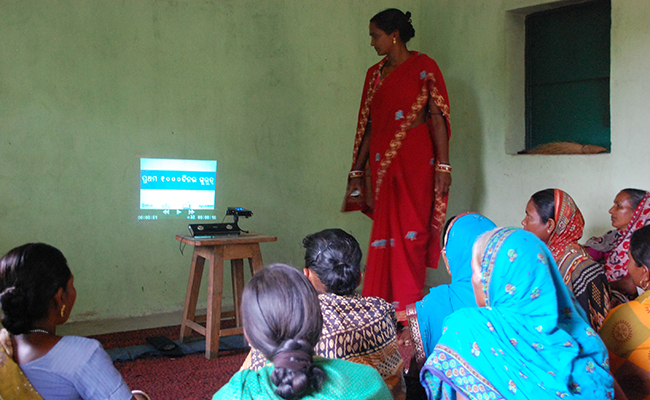Community Video for Nutrition Guide
After you have produced the videos and completed the approval process, you can load them on to pico projectors (via USB or micro SD memory cards) for dissemination. The diffusion process that follows, described in this section, includes dissemination, data entry into COCO, verification of the adoption of the desired behavior changes, and feedback analysis to better align the project to local community needs and interests.

Mediators play a critical role in disseminating videos to village groups (e.g., women’s SHGs), following up with home visits to support community members in negotiating behavior adoption, and monitoring project outcomes. Mediators are trained to use videos as a catalyst to engage groups in dialogue, pausing and rewinding the video to ensure that the audience fully grasps the concepts. After the screenings, mediators visit homes to verify and record data on adoptions. You can analyze this data to progressively improve the project in an iterative manner.
Figure 3 below details the steps in the diffusion process with bolded emphasis on the elements specific to the MIYCN approach detailed in this guide. The other steps are only briefly summarized below and are further explained in the DG SOP.
Figure 3: Diffusion
Click on the "Read section ..." buttons below and the corresponding steps in the process will appear.
- Plan the dissemination schedule.
- Hold dissemination preparation meetings as MIYCN refresher trainings.
- Conduct disseminations with groups in a participatory manner.
- Record participant details, including their interests, questions, and willingness to adopt or promote a particular practice.
- Observe and validate adoptions and promotions with home visits.
- Verify whether all critical points of practices have been followed or any innovations have been made.
- Enter monitoring data into COCO for analysis.
- Regularly cross verify a random sample of adoptions to ensure verification quality.
- Review participants’ feedback and adoption data to improve the video production and dissemination processes and identify content for new videos.